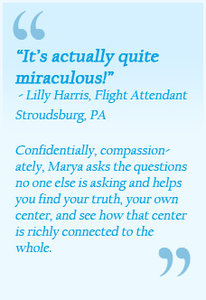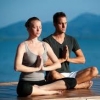Changing Perspectives

Most of our individual, relational and global ills arise from a culture unaware of our deep connection with life. Awareness of our connection with the greater human and nonhuman good would interfere with the contemporary love affair with consumerism, profit, fashion and competition. Change and sensitivity begin with paying attention to how we perceive and make choices, which begins with our awareness of what happens when we become still.
When we become still, we realize nothing is really immobile. The rise and fall of the abdomen with the breath, the lungs expanding and releasing, the heart beating, the blood moving through arteries, veins and capillaries all affirm a world of movement. Inner sounds, the mind jumping from thought to thought, the pulsing of e-motion—energy motion – constellate a rich inner landscape.
Psychology is the way we organize experience based on the interaction of present circumstances and the momentum of our habit energies. Habit energies are the psychological, physiological, cultural and ancestral patterns that inform how we perceive, think and make choices moment to moment.
In yoga we begin in the body, and that’s where a happier, more informed, ecological and ethical lifestyle begins. How can we generate a love of the earth and each other if we don’t live with an immediate connection to the body, the play of the mind and the natural world around us?
We can make the change with two steps. First, we need to understand the connection between personal choices and the effects of our actions. Second, once we see the relationship of our actions on the world, we need to acknowledge where we have contributed to the devastation and develop the practical skills for taking wiser action.
When we are caught up in reactivity and ignorance, when we are distracted by the past or fixated on the future, we have to learn to slow down and become a spiritual detective, uncovering our own peculiar patterns of addiction and aversion, alienation and apathy, anger and anxiety.
Since we share existence, just these few steps will help open doors to a brighter future. Environmental and social actions will come from skills we practice in stillness and hone through compassion. If we don’t know how to settle our own bodies and minds, we can never find the clarity needed to become most alive and useful in the world.
What’s lucky is that these skills are quite quick and easy to learn, and yet may take a whole lifetime to master. The best news is that they can help you right now. Physical, psychological and spiritual changes make us more flexible, open, patient, kind and creative. We awaken to our connections and allow ourselves to be vulnerable to the world beyond “me.” Such change happens in the present moment when we move consciously into stillness and focus there.
What we often find is madhouse of anxiety, fear, rejection, pain, pride, jealousy and greed, to put it mildly. These poisons have appeared in the minds of everyone who has ever lived on the planet. Include doubt and anger if you want to look at the life of Jesus Christ or the legend of Pele, the fire goddess who was once perhaps human. Our wise ancestors became wise by learning to make good decisions. They learned to make good decisions by making some very bad decisions fed by the poisons of the mind.
So it is with us. We have to first get over ourselves. We have to be fearless in the face of the unknown. That’s sincerity, never wavering from the truth that creativity and growth don’t happen just to fix the anxieties; they spring FROM the anxieties. The anxieties are like mothers to our creative action. Art pieces are children of the pain and pleasure of life merged together, unified, which is another definition of yoga, from the Sanskrit yuj, to yoke. We yoke all the energies in our field into one, centered wholeness when we practice yoga.
That means we love everything as it is. We don’t need to like or even not be angry about the way things are: few of us can be completely unconditionally loving about human trafficking, violence, weapons manufacturing and species decline. But through unconditional recognition of situations, noting the anxiety we feel around painful as well as pleasurable realities, and accepting how our efforts to change them may succeed or fail, we focus attention like a laser beam on our perceptions, igniting the fire of creativity.
John C. Maxwell wrote in How Successful People Think that creativity demands us to be unafraid of failure “because creativity equals failure.” He believes creativity requires a willingness to try new things, to look stupid and sometimes fail. “It means getting out on a limb—knowing that the limb often breaks! Creative people know these things and still keep searching for new ideas. They just don’t let the ideas that don’t work prevent them from coming up with more ideas that do work.”
In fact, according to Brian Johnson, the man who coined one of my favorite new words – anxietivity — creativity and anxiety go together. He quotes Charles Frankel, the U.S. Assistant Secretary of State under Lyndon Johnson who resigned in protest of the Vietnam War: “Anxiety is the essential condition of intellectual and artistic creation.”
So if you’re anxious, that is very good news. If you have failed, that is good news. Anxiety and failing are part of the creative process and so you are on your way!


